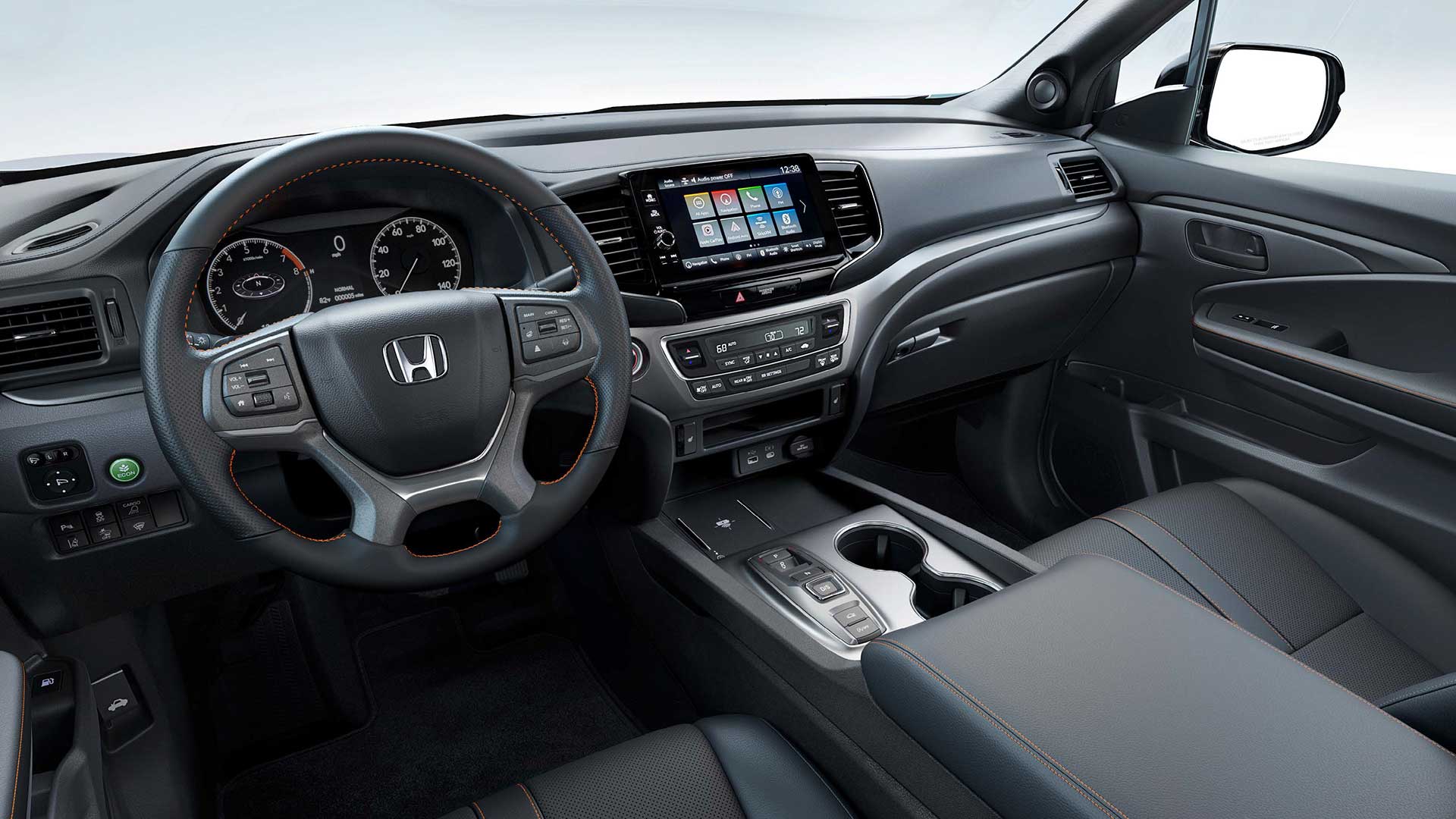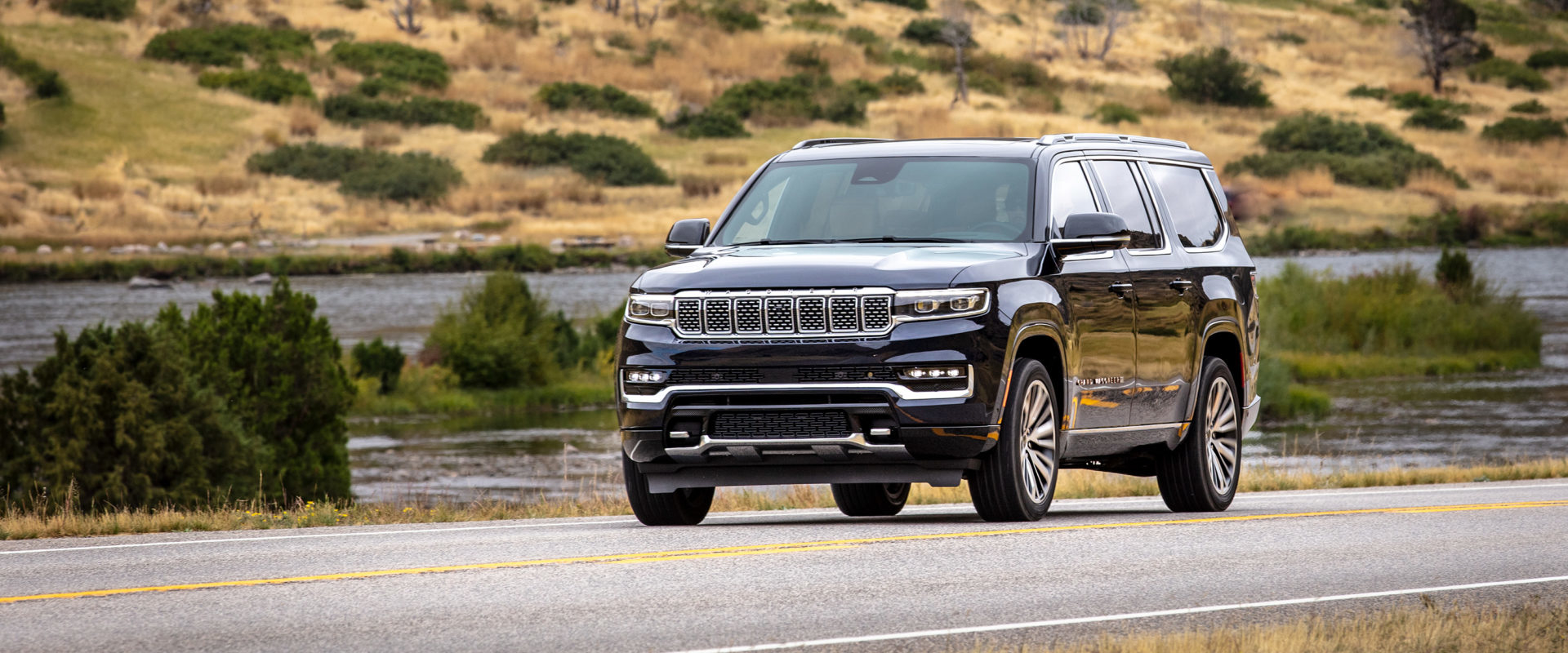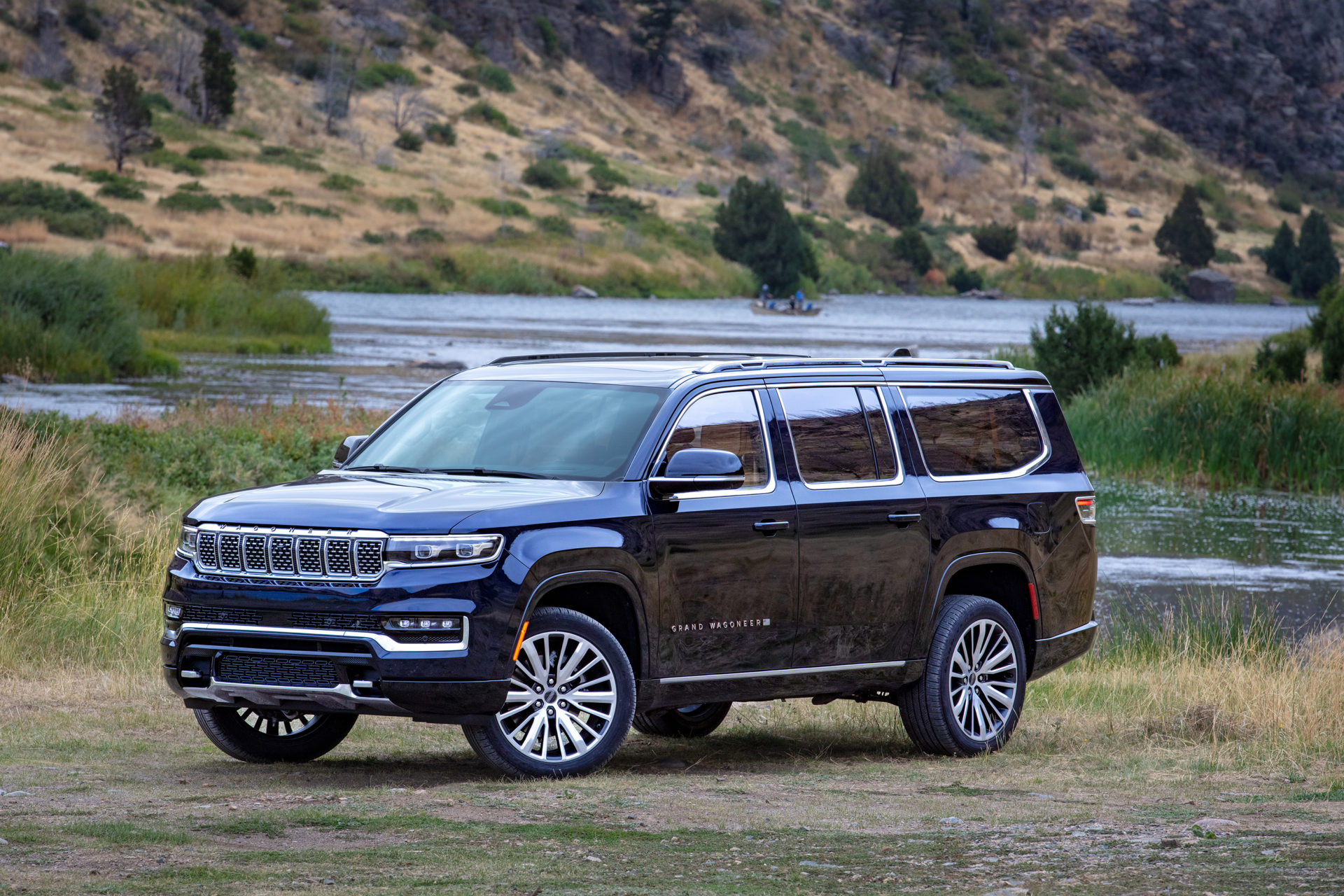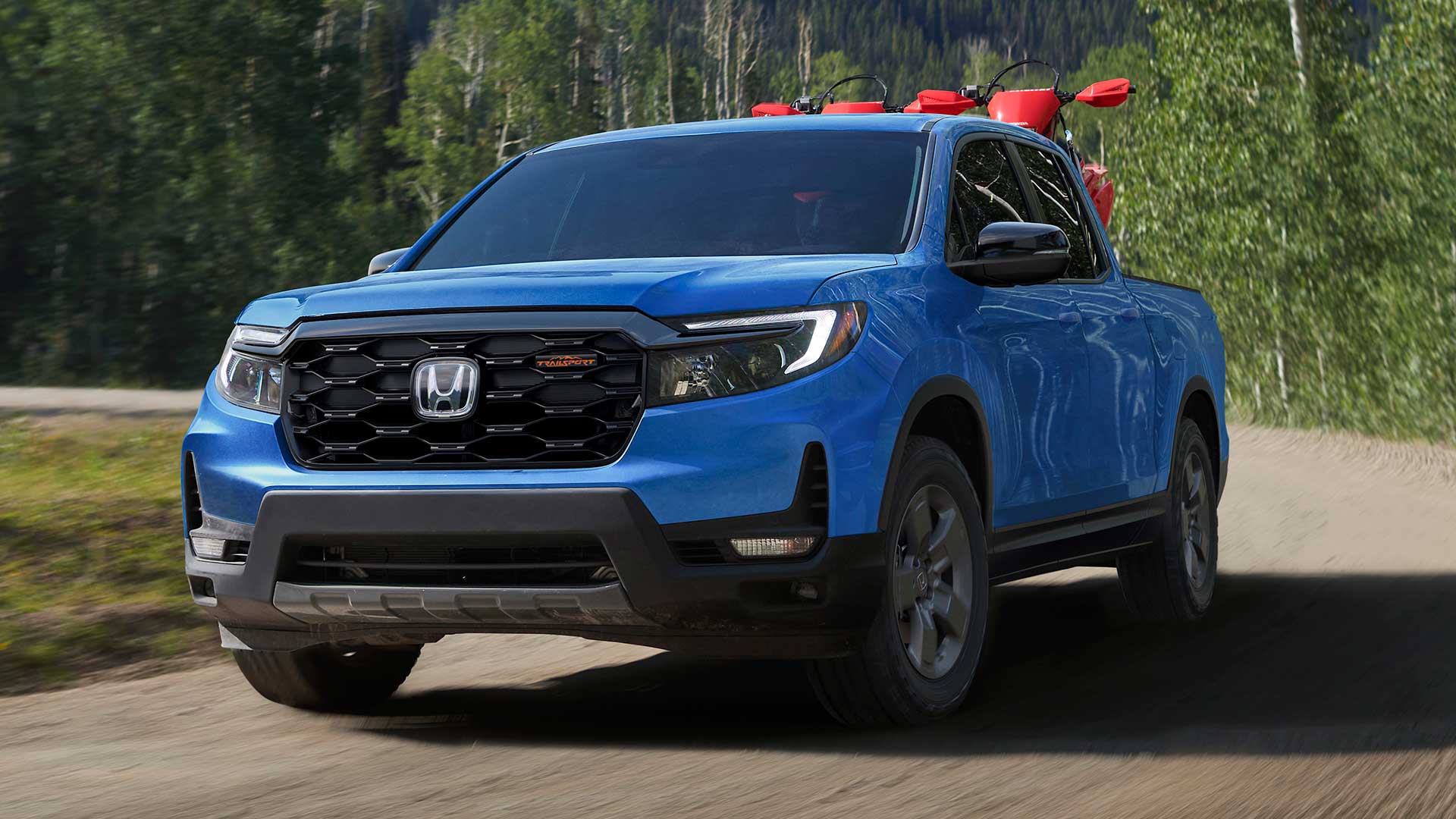2023 Jeep Grand Wagoneer L
An Impressive Luxurious Beast Of An SUV
Jeep has been going big lately, whether you’re talking about adding a 3rd row to the Grand Cherokee or reviving the Wagoneer and Grand Wagoneer as highly capable full-size 3-row utilities. Well, that obviously wasn’t enough. Now they’re going even bigger with this Grand Wagoneer L. So, let’s see how it shakes up America’s suburban lifestyle.
The Jeep Wagoneer and Grand Wagoneer burst onto the scene last year, giving Jeep owners with growing families a whole new 3-row option to grow into. Now, Jeep delivers a stretched alternative, the 2023 Wagoneer L and Grand Wagoneer L.
Wagoneer is of course the reintroduced premium extension of the Jeep brand, and the Grand Wagoneer takes it to extremes with standard air suspension, cargo management rail system, full LED lighting, running boards, black accent roof; plus, unique hood, front fascia, grille, and fender flares. Not to mention a whole suite of interior niceties; a unique dash design, walnut and aluminum trim, leather aplenty, and even massaging seats.
But both Wagoneer Ls share an elongated 130-inch wheelbase, 7 more than the standard Wagoneer, and an overall length that’s a foot more. And while the added length certainly makes it look large and in charge, it doesn’t appear too ungainly with things out of proportion.
Designed to haul up to 8 people plus plenty of gear as comfortably as possible; both 2nd and 3rd row legroom stay the same. The benefit comes strictly in cargo space behind the 3rd row, which here in the Grand Wagoneer L grows from 28.4 cubic-ft. to 44.2. That climbs to 88.8 with the 3rd row folded, and to a max of 112.9. The Wagoneer L’s less bulky seats allow for an even greater max total of 130.9 cubic-ft. All seats folding with a push of a button, of course. Towing capacity stays the same at 10,000-lbs.
But doing the pulling is an all-new 3.0-liter twin-turbo inline-6 engine; designed to deliver more power, more torque, and better efficiency than the standard Wagoneer’s V8. Dubbed “Hurricane,” two versions are available. The Wagoneer L’s with 420-horsepower and 468 lb-ft. of torque; while this Grand Wagoneer L gets a high output version with 510-horsepower and 500 lb-ft. of torque.
So, even with a bigger vehicle, you’ll be getting better fuel economy than the Grand Wagoneer’s 6.4-liter V8, as the turbo-6 with 8-speed automatic transmission and all-wheel-drive, both standard, achieves Government Fuel Economy Ratings of 14-City, 19-Highway, and 16-Combined, all numbers one better. We managed to average a fine 18.9 miles-per-gallon of Premium.
Depending on which trim is selected, you’ll get either Quadra-Trac I, Quadra-Trac II, or Quadra-Drive II 4-wheel-drive. For our Series II tester, that means Quadra-Drive II along with Quadra-Lift Air Suspension and 22-inch polished aluminum wheels which we steered towards Mason Dixon Dragway…
…where it was clear, this engine delivers an impressive amount of torque, considering how easily it dealt with the well over 3-tons of weight here. The Grand Wagoneer L launches hard, hitting 60 in just 4.9-seconds. Smooth and consistent power delivery from there, with almost every run we did coming in at 13.5-seconds at 104 miles-per-hour.
 2023 Grand Wagoneer L Series III Interior
2023 Grand Wagoneer L Series III Interior
There’s not much you can do about the close to 19-feet of length however, as it requires keeping inputs smooth; but we were able to get through our handling course carrying quite a bit of speed.
The interior is just as amazing as the regular Grand Wagoneer; with up to 75-inches of screen space and a McIntosh reference audio system pumping 1,375-watts of sound through 23-speakers. Front seats in Series II are 24-way adjustable with controls on the door just like Mercedes-Benz. If you opt for 2nd row captain’s chairs, a big center console houses a 10-inch comfort display screen for making adjustments, and of course other screens are available on the backs of the front seat headrests to keep you entertained and informed.
If all this space and luxury sound too good to be true; well, we can assure it’s real, but it will cost you, as the Grand Wagoneer L starts at a whopping $93,495. But, if you just need the space, and can get by with a lot less luxury and without 4-wheel-drive, you can get into a Wagoneer L for as little as $64,495.
In a few short years, Jeep has gone from having no 3-row offerings at all in their lineup, to having a multitude to choose from. The 2023 Grand Wagoneer L is an impressive luxurious beast of an SUV that takes the brand to even loftier heights.
Specifications
- Engine: 3.0L Twin Turbo V6
- Torque: 500 lb-ft
- 1/4 Mile: 13.5 seconds at 104 mph
- EPA: 14 City / 19 Highway / 16 Combined
- Horsepower: 510
- 0-60 mph: 4.9 seconds
- 60-0 Braking: 121 feet (avg)
- MW Fuel Economy: 18.9 mpg (Premium)
2024 Honda Ridgeline TrailSport
It Does Truck-Like Things Better Than Ever
Honda brought something truly unique to the pickup truck scene when their mid-size Ridgeline debuted for 2006. In 2017, it moved towards becoming a little more true truck-like, both in form and capability, now with yet another step in that direction for 2024. So, let’s see if the Ridgeline is really hitting its stride.
For 2024, it’s all about making this Honda Ridgeline better than ever. There are styling tweaks outside, along with tech and functional improvements inside, but the biggest news is the Ridgeline has now joined Honda’s TrailSport family of off-road inspired vehicles. This more-true-trucklike, second-gen Ridgeline been around since 2017, receiving periodic updates over the years; but joining the TrailSport family is the biggest leap yet.
Primarily, the TrailSport transformation includes General Grabber all-terrain tires, mounted on new Pewter Gray 18-inch wheels, steel underbody protection, and retuning the strut front, and multi-link rear suspension for added wheel articulation. And while we always appreciate the additional traction of off-road tires, the Ridgeline’s standard i-VTM4 all-wheel drive, with Intelligent Traction Management and snow, sand, and mud settings, was already quite capable of handling all but the most extreme off-roading, ground clearance of just 7.6 inches being it’s only real hinderance.
A 3.5-liter V6 remains under the hood as it has since the Ridgeline debuted for 2006; the current version outputs 280 horsepower and 262 lb-ft of torque, plenty enough muscle to handle its 5,000-lbs. towing capacity. A nine-speed automatic transmission with paddle shifters and bevy of push and pull buttons on the console replaced the six-speed automatic back in 2020.
In addition to adding TrailSport capability, a big focus for this update was making it more user-friendly inside, starting with the central touchscreen growing from 8 to 9 inches. It also gets faster processing speeds, menus have been simplified, and the native navigation system is improved with better graphics. It’s accompanied by a new digital instrument cluster, along with an upgraded center console with more storage space. Unique TrailSport touches include heavy duty floormats, leather-trimmed seats, orange stitching throughout the cabin, and orange ambient lighting.
The Ridgeline continues to offer things available nowhere else in the pickup truck market.
Exterior styling doesn’t exactly shout “macho big rig coming your way,” but the more vertical face and larger grille that arrived for 2021, along with this year’s added TrailSport elements, do continue to toughen up the Ridgeline’s image. The 5’4” bed remains highly functional with no large wheel well intrusions, multiple tie-downs points, lighting and even speakers. And of course, the Ridgeline continues to offer things available nowhere else in the pickup truck market, like the dual-action tailgate, and large, lockable, drainable, underbed storage. Not to mention being able to drive around in true car-like comfort, something we took full advantage of on our way to our Mason Dixon Dragway test track.
There was great grip off the line, with full power arriving smoothly but quickly, helping us to get to 60 in 7.0 seconds flat, a tenth quicker than the last Ridgeline we tested. That power delivery stayed fairly consistent the whole way down the track, barely interrupted by the nine-speed automatic’s smooth shifting. Our best quarter-mile run was 15.5 seconds at 90 mph.

The revised suspension and knobbier tires didn’t really seem to add or detract from handling prowess, as it felt as solid, nimble, and car-like as it always has through our cone course. Perhaps a little less stiff than before, but good feedback, tight steering, and minimal body roll for a pickup, made for a very confidence inspiring experience. In our braking test, we stopped in a respectable average of 123 feet from 60, with only moderate amounts of nosedive and good feel through the pedal.
There is, however, a slight reduction in Government Fuel Economy Ratings with the all-terrain tires; 18-City, 23-Highway, and 20-Combined, our average, right on, at 20.4 mpg of Regular. That’s a slightly below average Energy Impact Score of 14.9 barrels of yearly oil use, with CO2 emissions of 7.4 tons.
TrailSport pricing falls in line just under the Ridgeline’s top Black Edition trim with a starting price of $46,375, about five grand over a base Ridgeline Sport.
So, whether you consider the Honda Ridgeline to be a “real” truck or not, this ruggedly smooth 2024 TrailSport does truck-like things better than ever. And we’re not just talking about the slight upgrade in off-road performance, we’re talking about a flexible bed to help you get chores done, and the ability to tow or haul with comfort and flexibility other trucks can only wish for. It’s why the Ridgeline brings more first-time buyers to Honda than any other vehicle, and why it continues to be a great choice in the growing midsize truck realm.
Specifications
- Engine: 3.5-liter V6
- Transmission: 9-speed automatic
- Horsepower: 280
- Torque: 262 lb-ft
- EPA: 18 City | 23 Highway | 20 Combined
- 0-60 mph: 7.0 seconds
- 1/4 Mile: 15.5 seconds at 90 mph
- 60-0 Braking (avg): 123 feet
- MW Fuel Economy: 20.4 mpg (Regular)
- Max Towing Capacity: 5,000-lbs











